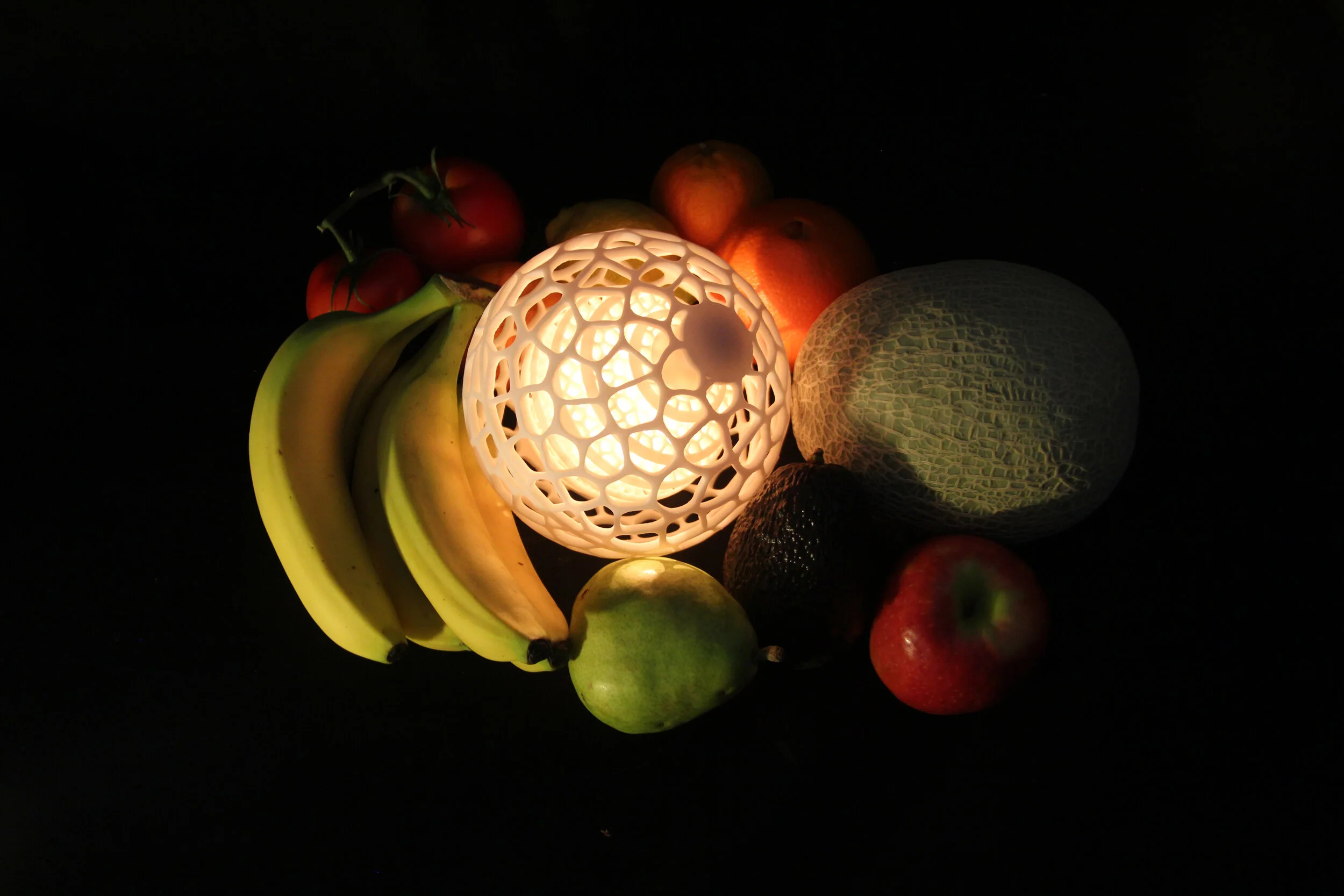CATALIGHT
Meet your future fruit companion that will help keep your produce fresh
MISSION - Working in collaboration with a lab on campus, identify an opportunity for innovation with a chosen technology from the lab and design a solution
TIMEFRAME - Fall semester, 2018
CONTEXT - Harvard Graduate School of Design course Nano Micro Macro: Adaptive Materials Laboratory
TEAM - Margaret George, Anahide Nahhal, David Gomez-Gil, Robert Wang, and Oliver Luo
PARTNERSHIP WITH TECHNOLOGY
Our journey began in the Nano Micro Macro: Adaptive Material Laboratory course (a class co-offered by the Graduate School of Design and the School of Engineering and Applied Sciences), where we are paired with science and engineering labs on campus to investigate emerging technologies and work with scientists hands-on to explore potential opportunities with these technologies.
We partnered with the Aizenberg Biomineralization and Biomimetics Lab at the Harvard Wyss Institute. The principal investigator Dr. Tanya Shirman innovated a process to produce synthetic structural colors, the same mechanism behind the characteristic iridescence of Morpho butterflies. Then, the scientists modified this process to deposit metallic nanoparticles (such as gold and platinum) onto the surface of this nanostructure, transforming the iridescent colors into a catalytic system capable of breaking down harmful airborne molecules. Our challenge was to work with the team that created what is essentially a colorful catalytic coating and design an application for this technology.
In our brainstorming, we immediately jumped to the problem of atmospheric pollution. One major group of pollutants is volatile organic compounds (VOCs), such as formaldehyde, methane, and benzene. These particles are too fine to be captured by conventional air filters, and many of them can be carcinogenic with prolonged exposure, even at trace amounts. We were shocked to find out in our research that while we often picture air pollution as smog enveloping whole cities, indoor air pollution can often be up to five times higher than outdoor pollution, but that was fortunate for us, because our technology works best without the presence of larger particulate matter that might get lodged in the nanostructure, and it would be harder to control for that in an outdoor environment while optimizing catalysis with a high surface-area with the coated nanostructure. So we narrowed our domain to indoor spaces.
Ceramic 3D-printed prototypes for studying high-surface-area core geometry and for conducting experiment.
RESEARCH AND EXPERIMENTS
Our initial investigation focused on ethylene, a VOC integral to the ripening process in fruits. We mapped out the lifecycle of fruits from harvest to consumption and interviewed local supermarket managers, distributors, and shoppers to better understand the waste problem as a result of ripening. We went through several design iterations, imagining interventions at many different points along the fruit journey. In the end, we arrived at the consensus of target end-users—consumers buying fruits to keep at home—both to leverage our design expertise in a space where optimized efficiency isn’t paramount and to bring to consumers visibility to this problem of wasted produce.
We also conducted several experiments to validate the rate of efficiency of this catalytic system, and we found notable decrease in methanol (the VOC we selected for the experiment) compared to our control.
Concept sketches (of a fruit companion) exploring high-surface-area shell geometries (cred. Robert Wang).
Animation of the exploded/construction view of the lantern design.
FINAL DESIGN
For our final presentation, we designed a fruit companion: a lantern that uses the passive heat from an embedded lightbulb to induce airflow through a high-surface area core coated with this material. We presented the design alongside prototypes, studies, and experimental setup. The design delighted many people and provoked interesting discussions among our critics, and it was submitted to the Office of Technology Development at Harvard for potential patent reviews.
Promo video for CATALIGHT, our design of a fruit companion, in the final in-class presentation.
Many thanks to Jonathan Grinham, Tanya Shirman, Joanna Aizenberg, James Weaver, Jack Alvarenga, Pamela Cabrera, Wyss Institute for Biologically Inspired Engineering, and the Aizenberg Biomineralization and Biomimetics Lab.




